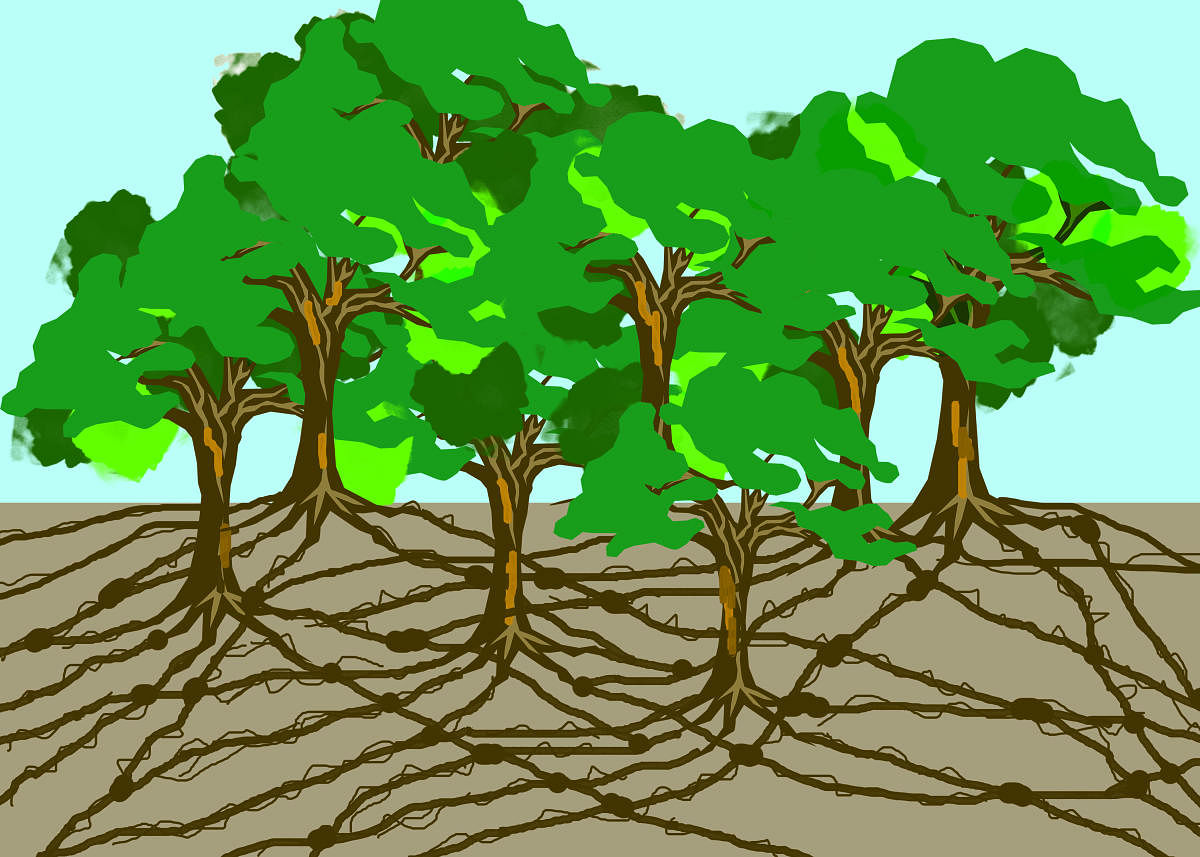About 30 years ago, Sir Tim Berners-Lee invented the World Wide Web, which is fundamental to today’s digitally-connected world. It turns out that the world’s trees have their own ‘Internet’, right below our feet. Called the Wood Wide Web, this intricate network, formed by fungi and bacteria, lets trees ‘talk’ to each other. This ‘conversation’ is through the exchange of nutrients, and chemicals, rather than words!
Ecologist Suzanne Simard first proposed the groundbreaking idea that trees ‘communicated’ across species through a network of fungi, and exchanged nutrients. Today, we know of many such microbes that lay down the wires for tree banter. Among them are ectomycorrhizal fungi, mostly found on the root surface of trees that grow in the temperate regions of the world. They form massive networks underground to exchange nutrients. Trees of the legume family, whose roots house the nitrogen-fixing bacteria, convert atmospheric nitrogen into a form that plants can readily use. In return, these microbes are rewarded with food.
The underground microbial network is tapped for many purposes. ‘Mother trees’, for example, use the network of fungi to provide necessary nutrients to younger plants. Trees that are under attack by disease-causing parasites signal other trees about the impending danger. Dying trees give up their nutrients to healthier trees through the network. Some even release toxic chemicals to wage a war and kill other trees!
In 2019, scientists published the first map of this underground Wood Wide Web that mapped 30 million trees, belonging to 28,000 species and spread over 70 countries, with the kind of microbes they house. Such a map helps researchers understand the role these network-building microbes play in storing carbon and the effect of global warming on them. But why are the trees so altruistic? Are there any ‘hacker’ trees lurking in the dark web underground? We’ll have to wait to hear!
